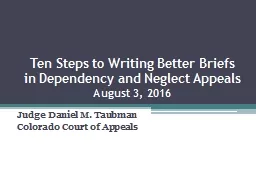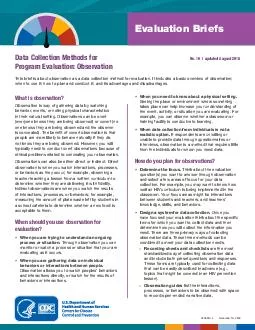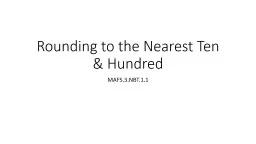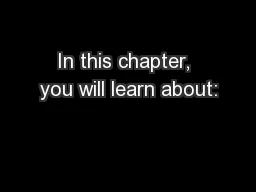PPT-Ten Steps to Writing Better Briefs
Author : phoebe-click | Published Date : 2017-03-18
in Dependency and Neglect Appeals August 3 2016 Judge Daniel M Taubman Colorado Court of Appeals I Outline Your Brief Review the rules Brainstorm Draft summary of
Presentation Embed Code
Download Presentation
Download Presentation The PPT/PDF document "Ten Steps to Writing Better Briefs" is the property of its rightful owner. Permission is granted to download and print the materials on this website for personal, non-commercial use only, and to display it on your personal computer provided you do not modify the materials and that you retain all copyright notices contained in the materials. By downloading content from our website, you accept the terms of this agreement.
Ten Steps to Writing Better Briefs: Transcript
Download Rules Of Document
"Ten Steps to Writing Better Briefs"The content belongs to its owner. You may download and print it for personal use, without modification, and keep all copyright notices. By downloading, you agree to these terms.
Related Documents












![[EPUB] - 5 Steps to a 5: AP Microeconomics 2022 (5 Steps to a 5 Ap Microeconomics and](https://thumbs.docslides.com/902993/epub-5-steps-to-a-5-ap-microeconomics-2022-5-steps-to-a-5-ap-microeconomics-and-macroeconomics.jpg)
![[EPUB] - The Busy Professor: Ten Easy Time Management Steps for Getting Your Academic](https://thumbs.docslides.com/903457/epub-the-busy-professor-ten-easy-time-management-steps-for-getting-your-academic-life-under-control.jpg)
![[EBOOK] - The Writing Workshop: Write More, Write Better, Be Happier in Academia](https://thumbs.docslides.com/905946/ebook-the-writing-workshop-write-more-write-better-be-happier-in-academia.jpg)